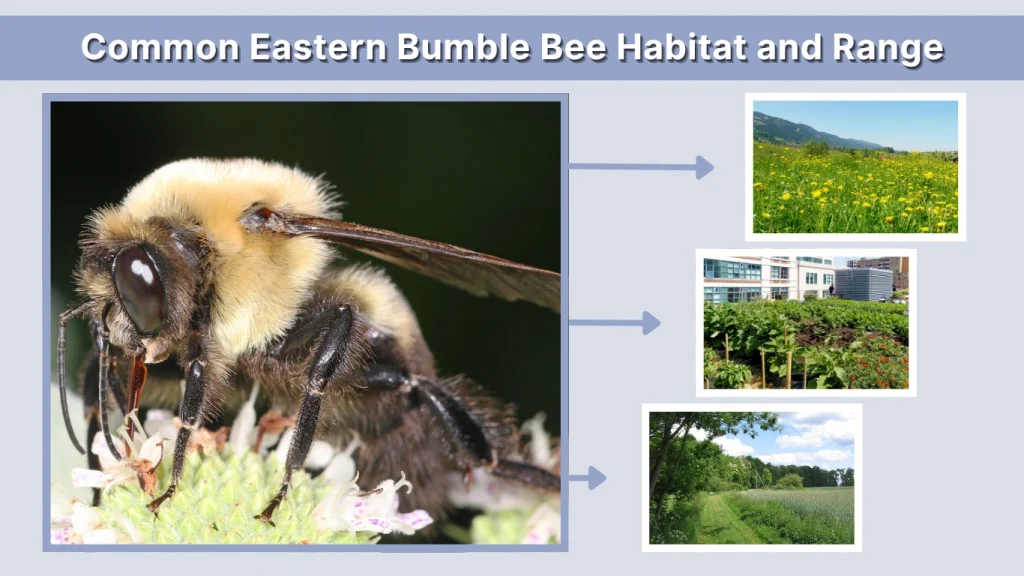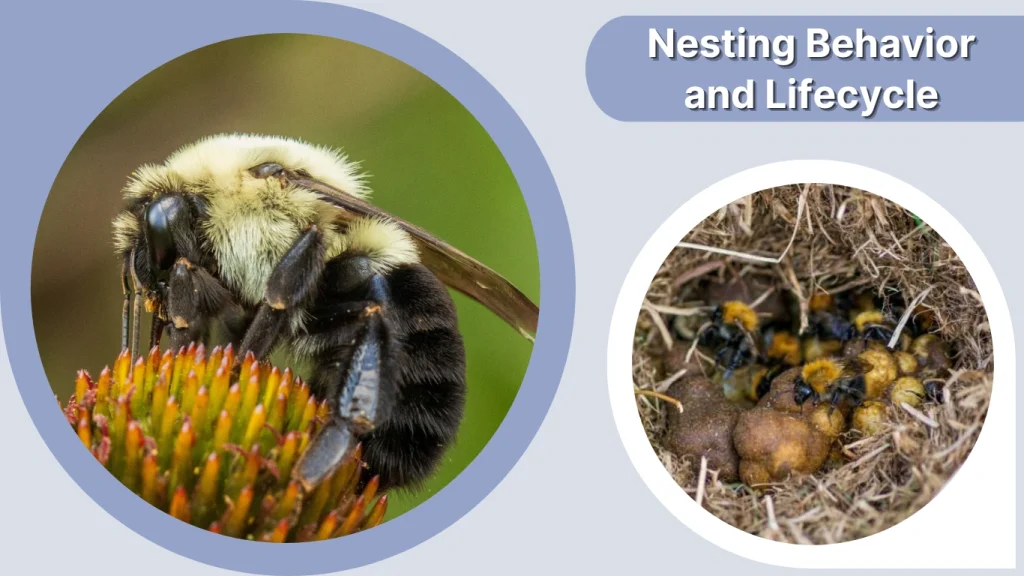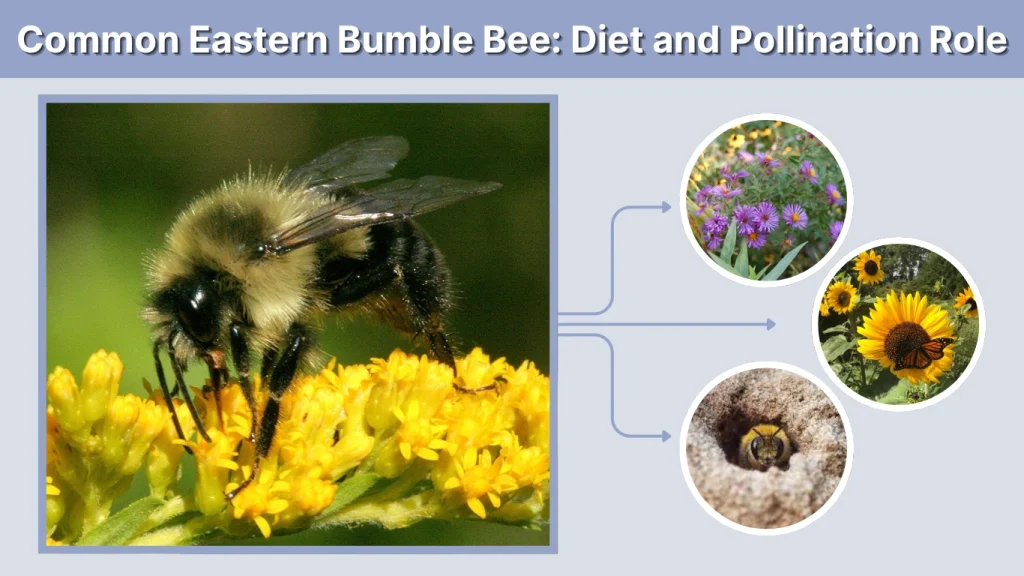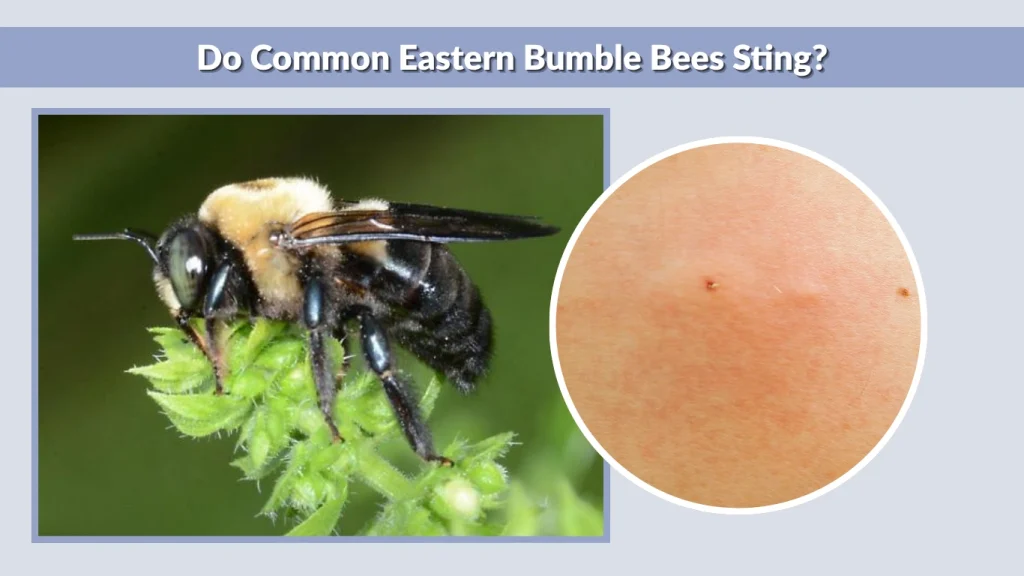The Common Eastern Bumble Bee is one of the most widespread and recognizable bee species in North America. Known for its black-and-yellow coloration and fuzzy appearance, it plays a crucial role in pollination across gardens, farms, and forests. Found abundantly throughout the eastern United States and parts of Canada, this bee is admired for its adaptability and importance to ecosystems and agriculture alike.
Overview of the Common Eastern Bumble Bee
The scientific name of the Common Eastern Bumble Bee is Bombus impatiens, and it belongs to the family Apidae. It’s a dominant pollinator species found across eastern North America — thriving from Florida to Ontario. Its adaptability allows it to survive in urban gardens, open meadows, and forest edges.
Unlike honey bees, which live in large colonies, Common Eastern Bumble Bees maintain smaller nests. These bees are active during spring and summer, making them highly visible among flowering plants. Their ecological importance lies in pollinating both native wildflowers and crops such as tomatoes, peppers, blueberries, and strawberries.
Physical Characteristics and Identification

The Common Eastern Bumble Bee is easily recognized by its dense yellow and black fur. Its thorax is completely yellow except for a black central spot, while its abdomen is black with one yellow band.
Size and Features:
- Queens: 17–23 mm long (largest in the colony)
- Workers: 8–18 mm long
- Males (drones): 12–15 mm long, slenderer than females
Male vs Female Bumble Bees
- Males have longer antennae and lack a stinger. They spend much of their time searching for queens during mating season.
- Females (workers and queens) have pollen baskets on their hind legs and are capable of stinging when threatened.
- Males appear later in the season and are usually less fuzzy around the face.
This species is often confused with carpenter bees, but there’s a simple difference — carpenter bees have shiny, hairless abdomens, while bumble bees are rounder and covered in dense fuzz.
Habitat and Range

The Common Eastern Bumble Bee inhabits a broad range across the eastern and central United States, stretching from the Gulf Coast to the Great Lakes and parts of southern Canada, including Ontario. They thrive in environments rich in flowering plants, such as:
- Meadows and grasslands
- Gardens and agricultural areas
- Forest edges and open fields
- Suburban yards and city parks
They are commonly found in Georgia, North Carolina, Pennsylvania, and New York, as well as across the Midwestern states. This species is extremely adaptable, surviving both in wild habitats and near human settlements.
Nesting Behavior and Lifecycle

Common Eastern Bumble Bees typically build their nests underground or in hidden, protected areas. They often occupy abandoned rodent burrows, compost piles, or dense grass patches. Each colony lasts for only one season.
The Lifecycle Stages:
- Spring: The queen emerges from hibernation, searches for a nesting site, and lays her first eggs.
- Summer: Workers hatch, collect pollen, and feed larvae. The colony grows to 100–400 individuals.
- Late Summer: Males and new queens are produced for mating.
- Fall/Winter: Fertilized queens hibernate underground until the next spring, while the rest of the colony dies off.
The entire cycle repeats yearly, with new queens founding fresh colonies. Their lifecycle makes them one of the most seasonally visible bees in the eastern United States.
Diet and Pollination Role

The Common Eastern Bumble Bee’s diet consists mainly of nectar and pollen. Nectar provides energy through natural sugars, while pollen is rich in protein for larvae growth.
Favorite Flowers:
- Clover and goldenrod
- Milkweed and sunflowers
- Asters and wild berries
- Garden vegetables like tomatoes and cucumbers
They are among the few species capable of buzz pollination, a technique where the bee vibrates its body to release pollen from flowers like tomatoes and peppers. This makes Bombus impatiens vital to both ecosystems and agricultural production.
In commercial agriculture, these bees are often used in greenhouses for controlled pollination because of their efficiency and gentle nature.
Do Common Eastern Bumble Bees Sting?

Yes, but only female bumble bees (workers and queens) can sting. Unlike honey bees, which die after stinging, bumble bees can sting multiple times. However, they are not aggressive and usually sting only when defending their nest.
Their sting can cause temporary pain and swelling, but it’s rarely dangerous unless someone is allergic to bee venom. Males, or drones, do not have stingers and are completely harmless.
To avoid stings, avoid disturbing nest entrances or trapping bees indoors. If you encounter a bumble bee in your garden, it’s best to observe quietly — they’re likely just collecting pollen and will move on peacefully.
Queen and Colony Structure
The queen bumble bee is the largest and most dominant member of the colony. She emerges in early spring after overwintering underground and immediately begins searching for a suitable nesting site. Once she finds one, she collects pollen and nectar to feed her first brood of larvae.
Each colony begins with the queen alone. She lays eggs, incubates them by vibrating her body for warmth, and raises the first generation of worker bees. These workers then take over foraging and nest maintenance while the queen focuses solely on laying eggs.
By midsummer, the colony reaches its peak size, with 100–400 individuals. Toward late summer, new queens and male drones are produced. After mating, the new queens find a safe place to hibernate, while the rest of the colony — including the original queen — dies off in autumn.
This natural annual cycle keeps bumble bee populations balanced and aligned with the flowering seasons.
Comparison: Common Eastern Bumble Bee vs Carpenter Bee

Though both species are frequent garden visitors, the Common Eastern Bumble Bee and the Carpenter Bee differ in many ways:
| Feature | Common Eastern Bumble Bee | Carpenter Bee |
| Body Appearance | Fuzzy, rounded body with yellow and black stripes | Smooth, shiny abdomen with little hair |
| Nesting Habits | Underground in burrows or cavities | Drills holes into wood structures |
| Aggression | Gentle and rarely stings | Males hover near humans but cannot sting |
| Pollination | Buzz pollination expert | Less efficient pollinator |
| Habitat Preference | Meadows, gardens, and grassy soil | Decks, fences, and wooden beams |
The easiest way to identify them is by the abdomen — a bumble bee looks fuzzy and round, while a carpenter bee’s body appears glossy and bare. Bumble bees are also more valuable pollinators because they transfer pollen between a wider variety of flowers.
Ecological Importance and Predators
The Common Eastern Bumble Bee is vital to both ecosystems and agriculture. As native pollinators, they help sustain wildflowers, fruit trees, and crops, contributing to biodiversity and food production.
They are essential in pollinating crops like:
- Blueberries
- Tomatoes
- Cranberries
- Peppers and squash
Their buzz pollination technique releases pollen from deep inside flowers, something honey bees cannot do. This makes Bombus impatiens an irreplaceable pollinator in both the wild and greenhouse farming.
However, like many bee species, they face natural predators and threats, including:
- Birds and small mammals like skunks and mice
- Spiders and parasitic flies
- Pathogens, mites, and pesticides
Maintaining healthy plant diversity and reducing chemical use helps protect these bees from decline.
Conservation and Population Trends
Although the Common Eastern Bumble Bee remains one of the most stable bee species in North America, scientists have observed concerning trends among other bumble bee populations. Habitat loss, urbanization, and pesticide exposure are major causes of decline.
In agricultural and suburban areas, the Common Eastern Bumble Bee’s adaptability has helped it survive where other species have struggled. It thrives in both wild and human-managed environments, making it an ecological success story — but also a warning that conservation is key for pollinator balance.
To support these bees, homeowners and gardeners can:
- Plant native wildflowers like coneflowers, clover, and goldenrod.
- Avoid pesticides, especially neonicotinoids.
- Provide nesting sites like small compost piles or undisturbed soil patches.
- Support conservation groups promoting pollinator habitats.
Encouraging these simple practices can ensure bumble bees continue their essential work for generations.
FAQs
What is the scientific name for the Common Eastern Bumble Bee?
The scientific name is Bombus impatiens. It belongs to the order Hymenoptera and family Apidae. This species is one of the most common bumble bees in eastern North America and is known for its adaptability in urban and rural areas alike.
Do Common Eastern Bumble Bees make honey?
Not in the way honey bees do. Bumble bees make small amounts of honey-like nectar to feed their larvae and sustain the colony temporarily. However, they don’t produce or store large honey reserves for human use.
How long does a Common Eastern Bumble Bee live?
The lifespan depends on the bee’s role:
- Workers: 2–6 weeks
- Males: Up to 3 weeks
- Queens: Nearly one year, including winter hibernation
Most bees die after the nesting season, while new queens overwinter and restart colonies in spring.
Where do Common Eastern Bumble Bees build their nests?
They often nest underground, using abandoned rodent holes, compost heaps, or thick grass patches. Occasionally, they may nest above ground in birdhouses, rock crevices, or insulation spaces in sheds or barns.


